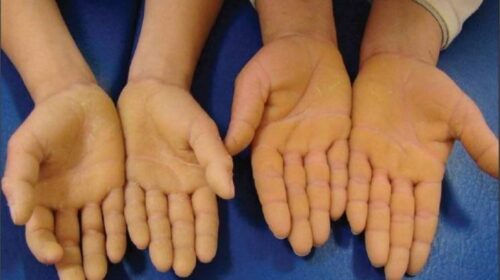Global Palmoplantar Keratoderma (PPK) Market to Surge at 2.8% CAGR, which is anticipated to reach USD 41,458.8 Million by 2030
CRI Report has released a report titled “Palmoplantar Keratoderma (PPK) Market – Global Analysis of Market Size, Share & Trends for 2019 – 2020 and Forecasts to 2030” which is anticipated to reach USD 1,458.8 Million by 2030. According to a study by CRI Report, the market is anticipated to portray a CAGR of 2.8% between 2020 and 2030. According to the report, Global Palmoplantar Keratoderma (PPK) Market is anticipated to witness lucrative growth opportunities in the coming years. Rising prevalence of PPK across the 7MM has triggered health concerns among the economies. Governments across the 7MM are increasing funding and grants for research and development activities for the production & invention of new medicines to develop new therapies which is proliferating the growth of the PPK market.
The market report on Global Palmoplantar Keratoderma (PPK) Market includes in-depth insights as:
- The estimated value of the market was USD 1,098.9 Million in the year 2020.
- Global Palmoplantar Keratoderma (PPK) in Europe held the largest market share in the year 2020.
- Key players are likely to focus on product innovations and expansion through merger to retain their positions in developed markets.
“Palmoplantar Keratoderma (PPK) is a rare disease and presently there is no available curative and specific therapy. This drives the growth of the market due to rising need and demand for certain therapy and treatment of the disease. Also, increasing efforts by the pharmaceutical and biotechnology companies along with the research laboratories focused towards the development of new drugs and therapies are contributing to the double-digit growth of the market in 7MM. Moreover, the growth of the palmoplantar keratoderma market is driven by increasing healthcare expenditure and growing R&D activities”, said a lead analyst at CRI Report.
Palmoplantar keratodermas (PPK) is a group of illnesses characterized by the thickening of the skin on the palms and soles of affected individuals’ feet. PPK can be classified into different categories such as hereditary forms with only skin complications, hereditary syndromes with PPK as an associated feature, and acquired forms. Hereditary PPK is the most common form of PPK which is generally diagnosed in the affected patients. Hereditary forms can be limited to the hands and feet, or they might be linked to a more widespread skin condition. Genetic mutations produce inherited PPKs, which result in keratin (a skin protein) abnormalities. Autosomal dominant or autosomal recessive inheritance can occur depending on the genetic reason. Acquired PPKs, on the other hand, might occur as a result of changes in a person’s health or surroundings.
Key Players in the Market
-
Some of the key players operating in the Global Palmoplantar Keratoderma (PPK) Market are Cilas, Murata Manufacturing Co., Ltd., Ceranova Corporation, Brightcrystals Technology Inc., Ceramtec-Etec GmbH, Coorstek, Inc., Konoshima Chemicals Co., Ltd., Surmet Corporation, Schott AG, II-VI Optical Systems, and Other Prominent Players
Get Valuable Insights into Global Palmoplantar Keratoderma (PPK) Market
In the new report, CRI Report thrives to present an unbiased analysis of the Global Palmoplantar Keratoderma (PPK) Market that covers the historical demand data as well as the forecast figures for the period, i.e., 2021-2030. The study includes compelling insights into growth that is witnessed in the market. Geographically, the market is segmented into Europe, Japan and Middle U.S.




